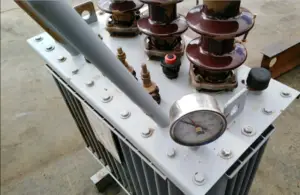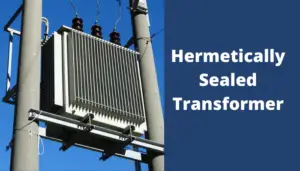When a transformer burns out, It makes a great miss in the location, the teamwork has to work hard to return the power back to the load.
Table of Contents
what would cause a transformer to burn up?
Electric transformers can burn for several reasons, and the exact cause can vary depending on the specific circumstances. Here are some common reasons why transformers might experience failures and, in some cases, burn:
-
Overloading: Transformers are designed to handle a specific amount of electrical load. If the load exceeds the transformer’s capacity, it can overheat and potentially catch fire. Overloading can occur due to increased power demand, equipment malfunction, or incorrect system configurations.
-
Short Circuits: A short circuit can occur when there is a direct connection between the transformer’s high-voltage and low-voltage sides. This can lead to a sudden surge in current, causing overheating and potentially resulting in a fire.
-
Insulation Failure: Transformers rely on insulation materials to prevent the flow of current between the windings. If the insulation fails or degrades, it can lead to a short circuit and subsequent overheating.
-
Aging and Wear: Transformers have a finite lifespan, and over time, the materials they are made of can degrade. Aging can lead to increased resistance, reduced efficiency, and a higher likelihood of failure.
-
Poor Maintenance: Inadequate or irregular maintenance can contribute to transformer failures. Regular inspections, oil testing, and preventive maintenance measures are essential to ensure that transformers operate within their design parameters.
-
External Factors: Environmental conditions, such as extreme temperatures, humidity, and pollution, can affect the performance of transformers. Adverse weather conditions, like lightning strikes, can also lead to electrical surges and damage.
-
Manufacturing Defects: Occasionally, transformers may have defects introduced during the manufacturing process. These defects can contribute to premature failure if not detected and addressed during quality control processes.
-
Voltage Fluctuations: Sudden voltage changes or fluctuations in the power supply can stress the transformer, potentially leading to overheating and failure.
It’s important to note that transformers are complex systems, and failures can result from a combination of factors. To prevent transformer failures, proper design, regular maintenance, and monitoring are crucial. Additionally, protective devices such as fuses and relays are often installed to isolate transformers in the event of a fault and prevent further damage.
How to Protect Transformers From Burnout?
Protecting transformers from burnout involves a combination of proper design, regular maintenance, monitoring, and the use of protective devices. Here are some strategies to help prevent transformer burnout:
-
Proper Sizing and Design:
- Ensure that transformers are appropriately sized for the expected electrical load.
- Follow design specifications and standards to prevent overloading.
-
Load Monitoring:
- Implement a reliable load monitoring system to keep track of the transformer’s operating conditions.
- Set alarms or trip mechanisms to alert operators if the load approaches or exceeds the transformer’s capacity.
-
Temperature Monitoring:
- Install temperature monitoring devices to track the temperature of the transformer’s windings and oil.
- Set temperature limits and implement protective measures if temperatures rise beyond acceptable levels.
-
Regular Maintenance:
- Establish a routine maintenance schedule that includes inspections, oil testing, and cleaning.
- Replace aging or damaged insulation materials promptly.
- Check for loose connections and correct any issues.
-
Oil Quality Monitoring:
- Regularly test the quality of the insulating oil to identify any signs of degradation or contamination.
- Replace or filter the oil as needed to maintain its dielectric properties.
-
Protective Relays:
- Install protective relays that can detect abnormal conditions, such as overloading, short circuits, or voltage fluctuations.
- Configure relays to trip the transformer offline in the event of a fault to prevent further damage.
-
Overcurrent Protection:
- Use overcurrent protection devices such as fuses and circuit breakers to disconnect the transformer from the system during overloads or short circuits.
-
Lightning Protection:
- Install lightning arresters to protect transformers from the effects of lightning strikes.
- Ensure that grounding systems are effective in dissipating lightning-induced currents.
-
Environmental Considerations:
- Protect transformers from adverse environmental conditions by installing weatherproof enclosures or placing them in suitable locations.
- Consider additional protection for transformers located in areas prone to pollution, extreme temperatures, or high humidity.
-
Training and Awareness:
- Provide training to personnel responsible for operating and maintaining transformers.
- Promote awareness of safe operating practices and the importance of reporting any unusual conditions.
By combining these measures, operators can significantly reduce the risk of transformer burnout and ensure the reliable operation of the electrical distribution system.
Regular monitoring and prompt action in response to abnormal conditions are essential elements of a comprehensive transformer protection strategy.
Is transformer oil flammable?
Yes, transformer oil, also known as insulating oil or dielectric oil, can be flammable. Transformer oil is a type of mineral oil or synthetic oil that is used to insulate and cool the windings of a transformer.
It serves several important functions, including providing electrical insulation, transferring heat away from the transformer components, and suppressing the formation of arcing.
While transformer oil itself is not highly flammable, it can combust under certain conditions. The flash point of transformer oil, which is the lowest temperature at which it can vaporize to form an ignitable mixture in air, is typically above 140 degrees Celsius (284 degrees Fahrenheit). However, when a fire occurs, transformer oil can contribute to the fire and pose a risk.
Factors that can contribute to the flammability of transformer oil include:
-
Presence of Oxygen: For combustion to occur, oxygen must be present. In the event of a transformer failure or fire, oxygen in the air can react with the oil, contributing to the flammability.
-
High Temperatures: Elevated temperatures can increase the likelihood of ignition. Overheating within a transformer due to electrical faults or other issues can potentially lead to the oil reaching temperatures where it becomes flammable.
-
Electrical Arcs: In the presence of a fault, such as a short circuit, electrical arcs can generate heat and potentially ignite the oil.
-
Contamination: Contamination of the oil with materials that can lower its flash point, such as particulate matter or other flammable substances, may increase the flammability of the oil.
To mitigate the risk of fires involving transformer oil, safety measures, and protective devices are employed. These may include:
-
Buchholz Relay: This is a protective relay that is installed in the oil-filled casing of a transformer. It detects faults and gas accumulation within the transformer and can trigger an alarm or initiate a shutdown.
-
Pressure Relief Devices: These devices release excess pressure from the transformer, reducing the risk of catastrophic failure and oil release.
-
Fire Suppression Systems: Some transformers are equipped with fire suppression systems that can help control or extinguish a fire.
-
Proper Installation and Maintenance: Following safety guidelines, regular maintenance, and prompt repair of any issues can help prevent transformer failures and associated fires.
It’s crucial to follow safety protocols, conduct regular inspections, and have appropriate protective measures in place to minimize the risks associated with the flammability of transformer oil.
Signals That A Transformer Is About To Burn Out
Recognizing the signals that a transformer is at risk of burning out is crucial for preventing catastrophic failures. Here are some common signals that may indicate a transformer is in distress or about to burn out:
-
Unusual Noise:
- Transformers typically produce a steady humming sound during normal operation. If you notice unusual buzzing, crackling, or popping sounds, it may indicate internal arcing or other issues.
-
Overheating:
- Elevated temperatures are a clear sign of potential problems. Use infrared thermography or thermal sensors to monitor the transformer’s temperature. Hot spots on the transformer surface or increased oil temperature can be indicators of trouble.
-
Oil Leaks:
- Any visible oil leaks around the transformer may suggest a problem. Transformer oil is essential for cooling and insulation, and leaks can lead to decreased efficiency and potential overheating.
-
Abnormal Oil Color or Odor:
- Discolored or cloudy transformer oil may indicate contamination or degradation. A burnt odor in the oil is a concerning sign and may suggest overheating or electrical faults.
-
Corrosion or Physical Damage:
- External signs of corrosion, rust, or physical damage to the transformer tank may compromise its integrity and increase the risk of failure.
-
Fluctuating Load:
- Frequent load changes or irregular power supply patterns can stress the transformer and lead to overloading.
-
Frequent Tripping or Fuse Blowing:
- If protective devices, such as fuses or circuit breakers, frequently trip or blow, it may indicate underlying electrical faults or overloading.
-
Unusual Vibrations:
- Excessive vibrations or mechanical noise may suggest mechanical issues within the transformer, such as loose components or winding problems.
-
Arcing or Sparks:
- Visible arcing or sparks around the transformer may indicate electrical faults, such as insulation breakdown or short circuits.
-
Increased Gas Levels:
- Monitoring gases within the transformer can provide insight into its condition. Elevated levels of gases such as hydrogen or methane may suggest developing faults.
-
Buchholz Relay Alarms:
- If the transformer is equipped with a Buchholz relay, alarms or tripping initiated by this device may signal gas accumulation or oil movement, indicating a potential problem.
-
Age and Maintenance History:
- Transformers have a finite lifespan. Regularly assess the age of the transformer and review its maintenance history. Older transformers may be more prone to failure.
If any of these signs are observed, it is essential to take immediate action. This may include shutting down the transformer, conducting a thorough inspection, and addressing any identified issues through repairs or replacement.
Early detection and intervention can help prevent burnout and extend the lifespan of the transformer. Regular preventive maintenance and monitoring are key practices in ensuring the reliable and safe operation of transformers.
How to fix a burnt transformer?
Fixing a burnt transformer is a complex task that often requires specialized knowledge and skills. In many cases, it may be more practical and safer to replace the damaged transformer rather than attempt repairs.
However, if you are dealing with a small transformer or if the damage is minor, you may consider the following general steps.
Keep in mind that these steps are for informational purposes only, and actual repairs should be performed by qualified professionals with expertise in electrical systems.
-
Ensure Safety:
- Before attempting any repairs, ensure that the power to the transformer is disconnected, and the area is safe. If there’s any doubt or if the damage is severe, consult with a professional electrician or engineer.
-
Assess the Damage:
- Examine the transformer to assess the extent of the damage. Identify burnt or damaged components, inspect the windings, and check for any signs of insulation failure.
-
Replace Burnt Components:
- If the damage is localized to specific components, such as fuses, wiring, or bushings, you may replace these components with new ones. Ensure that replacements are of the correct type and rating.
-
Clean and Decontaminate:
- Clean the transformer and remove any contaminants or debris. If there is residual burnt material or oil, it may need to be properly disposed of, and the transformer should be thoroughly cleaned.
-
Repair Insulation:
- If the insulation is damaged but the windings are salvageable, you might consider repairing or replacing the insulation. This process may involve carefully removing damaged insulation and applying new insulating material.
-
Testing:
- Perform diagnostic tests to ensure that the repaired transformer is functioning correctly. This may include insulation resistance tests, turns ratio tests, and other electrical measurements.
-
Oil Replacement:
- If the transformer uses oil for cooling and insulation, assess the condition of the oil. If it’s contaminated or degraded, consider draining and replacing it with new, clean oil.
-
Reassemble and Energize:
- Once the repairs are complete and all damaged components have been replaced or repaired, reassemble the transformer. Energize the transformer cautiously, monitoring for any abnormal sounds, smells, or performance issues.
-
Monitor and Inspect:
- Keep a close eye on the transformer’s performance and conduct regular inspections to ensure that the repairs are effective and that there are no new issues arising.
It’s important to note that transformer repairs can be intricate, and safety is a top priority. If in doubt or if dealing with a larger or more complex transformer, it is advisable to consult with professional electrical engineers or technicians.
In many cases, transformers that have experienced significant burn damage may need to be replaced to ensure the continued reliability and safety of the electrical system.
Don’t Leave Empty-Handed!
Install my Free Android App on Google Play:
Electrical Cables Most Common Tables “Cables Tables”
And, my Electrical Calculations App “Fast Electrical Calculator”
Discover more great content by subscribing to My channel
Looking to stay ahead of the game in the world of electrical engineering? Subscribe to my YouTube channel and gain access to exclusive content you won’t find anywhere else!
The staff I recommend
(Amazon Affiliate Links to products I believe are high quality):
- Economy 120 Volt/60Hz AC Power Source – Step-Down Voltage & Frequency Converters 1800W
- UNI-T Digital Multimeter Tester UT139C
- 50-Amp Extension Cord for RV “100ft”
- Voltage Stabilizer 110/220v
- Hair Dryer “best selling“
- TOSHIBA EM131A5C-BS Countertop Microwave Ovens
Disclaimer: This contains affiliate links to Amazon products. I may earn a commission for purchases made through these links.



